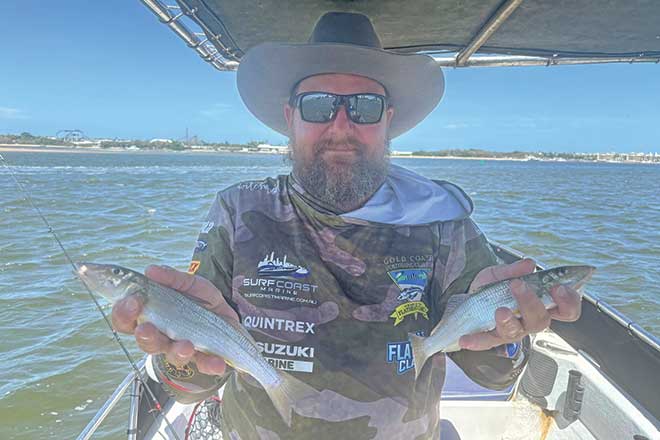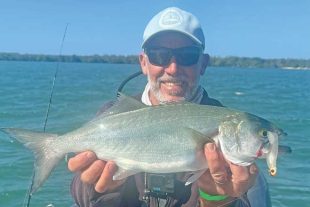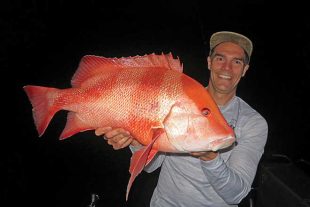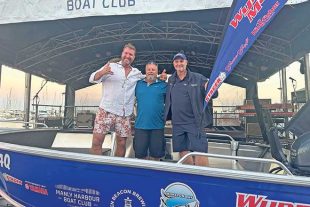Hi everyone, well we are coming towards the end of a hot, wet and windy summer, which is a relief!
On the plus side, the fishing has been epic.
I know I’ve been talking about sand whiting a lot lately but this month I will share again some tips for targeting these hard-fighting and delicious fish.
Summer rainfall at the start of this year was well above average on the Gold Coast.

The Hinze Dam was overflowing, resulting in a continued flow of muddy water downstream to the Nerang River and southern end of Broadwater.
This in turn caused some of the best whiting fishing I have ever experienced.
Whiting are very tolerant of dirty water, though even they have their limits.
If the water colour is a chocolate brown, it pays to go looking downstream to find water that is a lighter brown or dark green colour.
Here you may find big schools of quality sized fish.
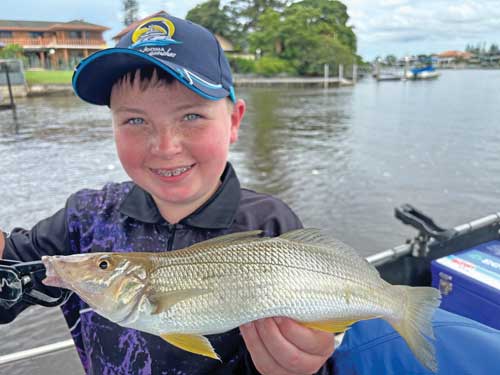
Also, in the southern Broadwater, there are areas whiting love to frequent over the warmer months.
Combine this with rain pushing them downstream from the Nerang and you have some fantastic fishing opportunities.
My favourite areas to fish for whiting during these times are the shallower banks slightly downstream from the Southport School, the western channel from Sundale Bridge to the Broadwater Tourist Park and the area from the Aqua building to Charis Seafoods at Labrador.
A school of whiting are constantly on the move feeding, so I prefer to drift and cover ground to find them each day.
If you find a big school, anchoring works well.
If they’re scattered, keep drifting.
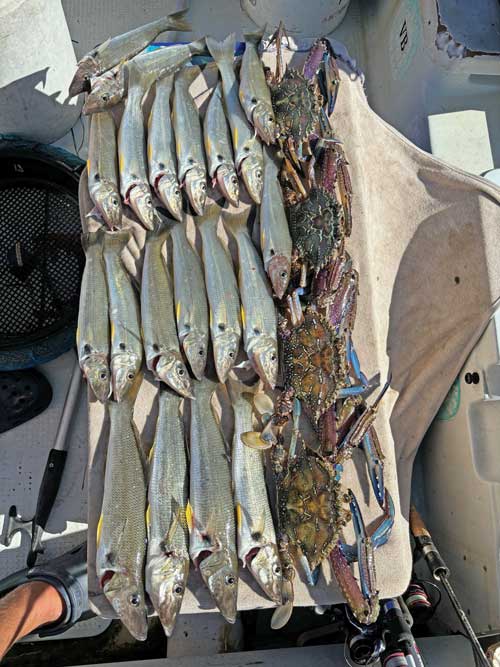
When there’s a strong wind blowing in the same direction as a strong tide, sometimes there’s no choice but to anchor, otherwise you’ll drift too fast.
Pumping yabbies at low tide is essential to catching good whiting in the Broadwater.
My favourite areas to pump are the southwest corner of Wave Break Island and the southern half of Curlew Island.
If you can’t get yabbies, live beachworms are the next best thing and can be bought at Aqua Adventures in Southport.
The best tackle for whiting fishing in the Broadwater is a soft-tipped bait fishing rod at least 7’ in length, a 2500 size reel spooled with 10lb monofilament line, 2 or 3-sized ball sinkers, small swivels, 1m or a little more of 6-8lb fluorocarbon leader and #4 sized baitholder hooks.

Using a running sinker trace, thread the hook into the yabby’s tail, then up through the body and out near the head.
If you’re drifting, let the bait run out about 5m from the boat, then wait patiently for bites.
Do not strike when a whiting first starts nibbling the yabby or you’ll miss a lot of fish.
Wait until the rod buckles over, then strike hard once and play them out carefully.
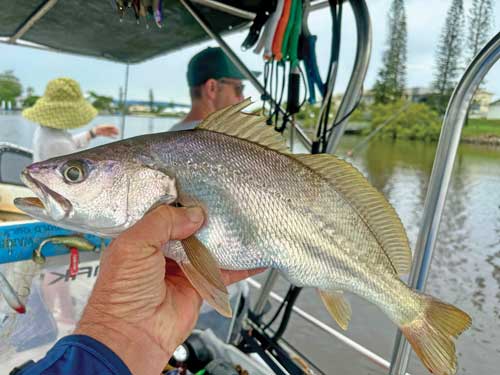
There’ll be lots of by-catch, such as smaller whiting, bream and flathead, so to find the bigger whiting, it pays to cover ground and persist.
If anchored, cast the bait out at least 10m with the tide and either sit the rods in rod holders until a fish is hooked or very slowly wind until a fish grabs the bait, then stop and let them eat.
Whiting love a moving bait.
I hope these tips help you catch an amazing feed of this delicious fish.

For a bonus catch, put crab pots out near where you fish – blue swimmer crabs live in the same sandy areas.
Some sand whiting facts…
Sand whiting can be found from Tasmania all the way to Cape York on Australia’s east coast, as well as Lord Howe Island, New Caledonia in the Pacific Ocean and Woodlark Island in Papua New Guinea.
They are most prolific in southeast Queensland and northern NSW.
Interestingly, they have the ability to completely burrow into the sand and remained hidden until a danger has passed by.
They begin breeding at around 22cm in length and in southern Queensland, spawn multiple times from September to February.
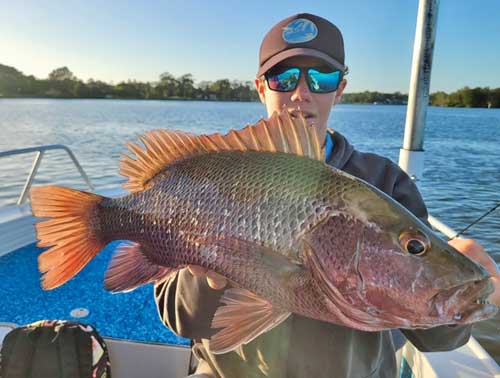
Juveniles reach over 16cm in length after their first year of life, 26cm after their second year and 30cm after their third.
In NSW, sand whiting have a minimum legal length of 27cm and a bag limit of 20 per person, while in Queensland there is a minimum size of 23cm and a combined bag limit of 30 for all whiting species.
At Tweed River, Brad Smith has been targeting mangrove jack as well as flathead, jewfish and bream using deep-diving trolled Atomic lures and Samaki soft vibes.
To book on a charter with myself or Brad, or if you have any fishing related questions, visit goldcoastrivercharters.com, SMS 0432 990 302 or email fishingwithclint@gmail.com, or find us on Facebook at Brad Smith Fishing Charters.
 Bush 'n Beach Fishing Magazine Location reports & tips for fishing, boating, camping, kayaking, 4WDing in Queensland and Northern NSW
Bush 'n Beach Fishing Magazine Location reports & tips for fishing, boating, camping, kayaking, 4WDing in Queensland and Northern NSW

